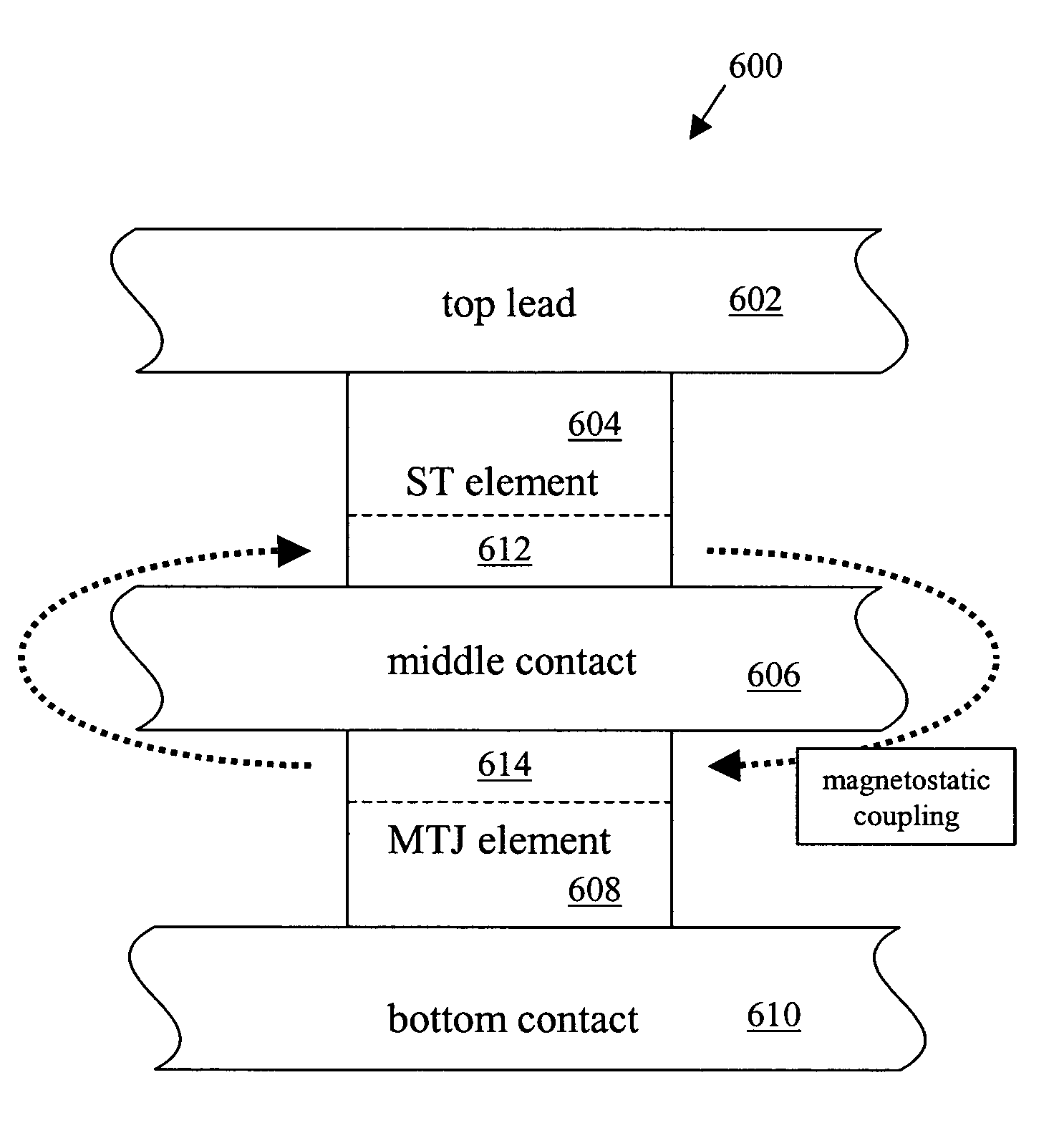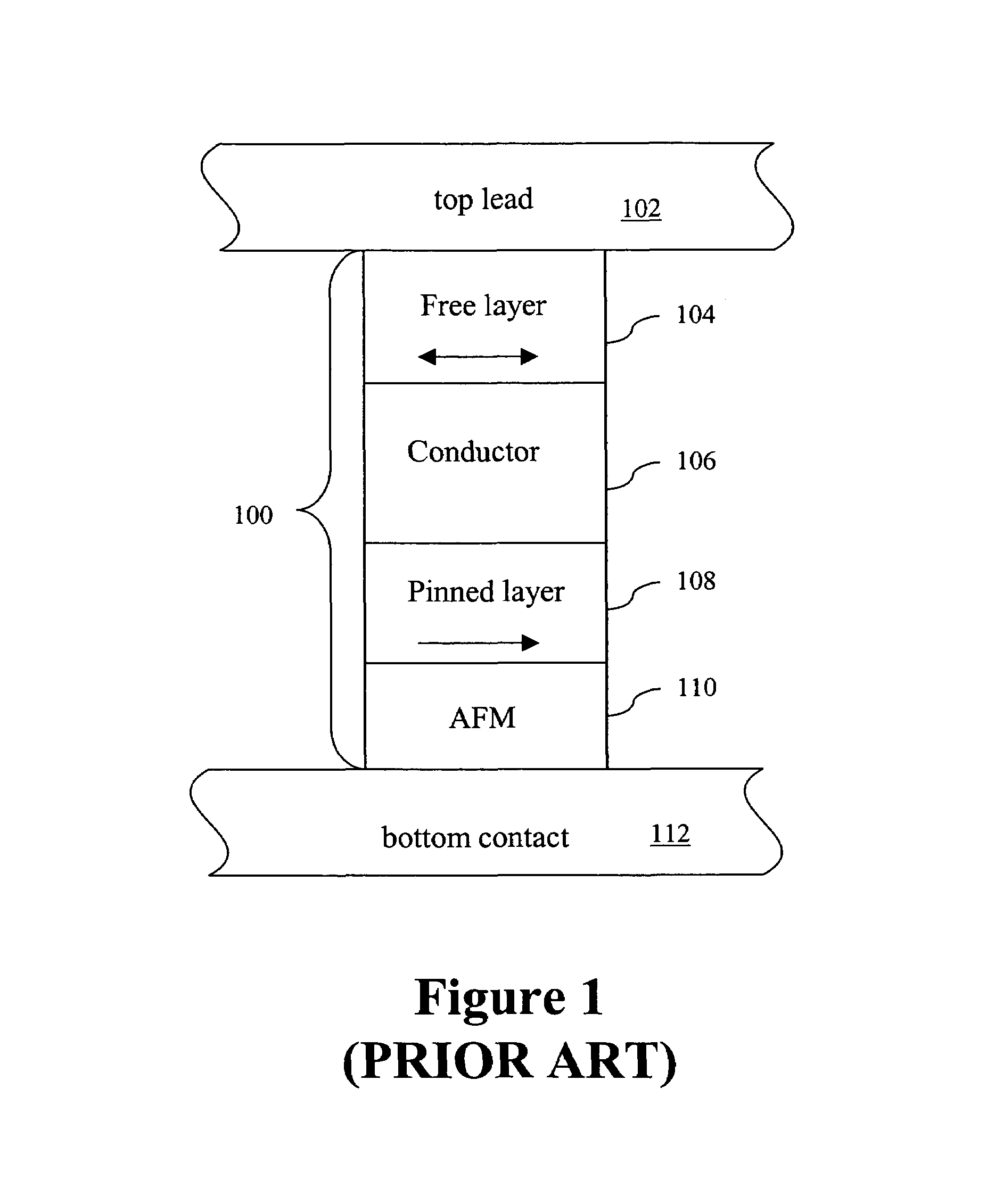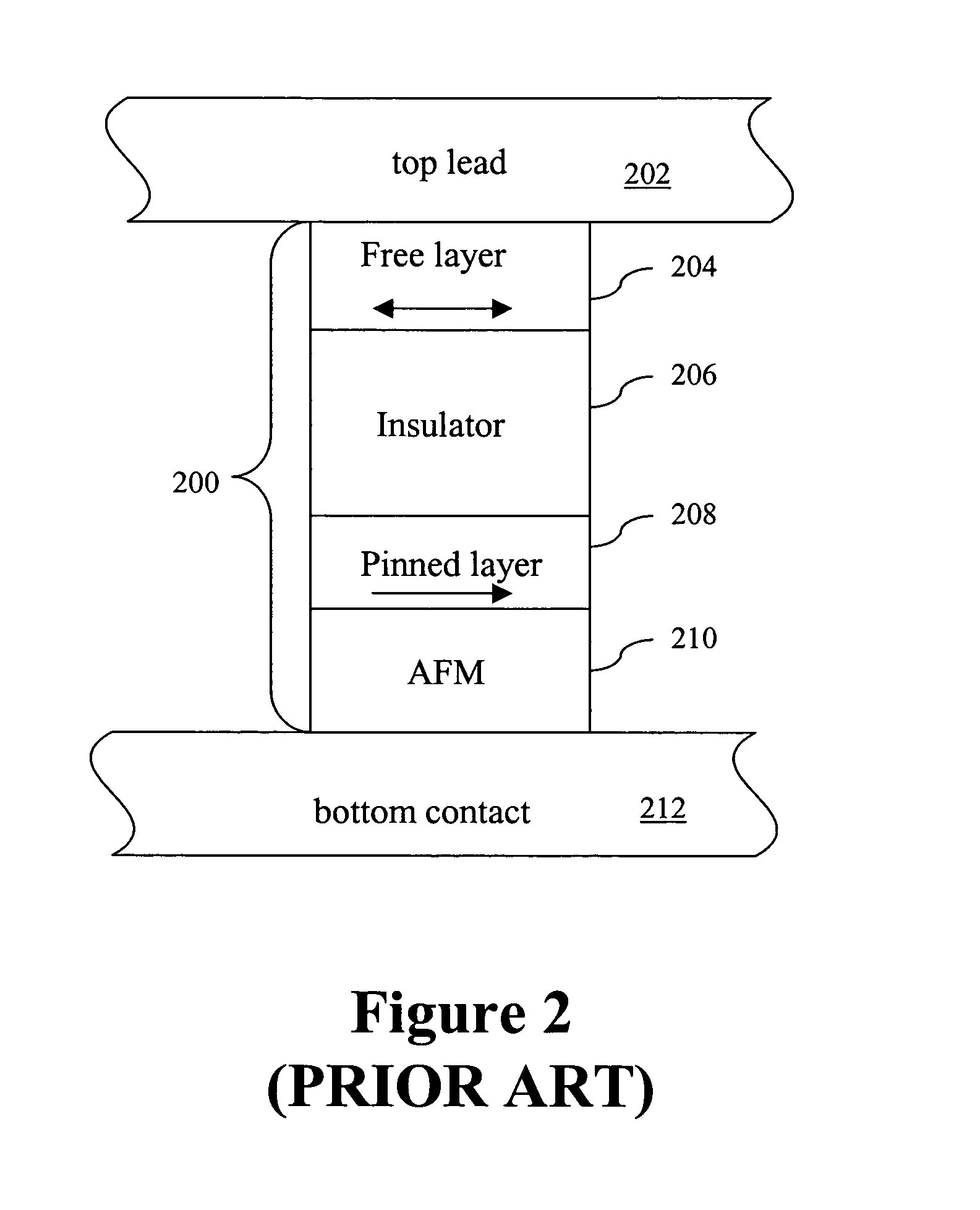Three-terminal magnetostatically coupled spin transfer-based MRAM cell
a spin transfer and mram cell technology, applied in the field of three-terminal magnetostatically coupled spin transfer-based mram cells, can solve the problem of not being able to reduce the high operating current sufficiently
- Summary
- Abstract
- Description
- Claims
- Application Information
AI Technical Summary
Problems solved by technology
Method used
Image
Examples
second embodiment
[0057]FIG. 14 illustrates the second embodiment in a structural layout with like numbers designating the like elements in FIG. 13. Thus, a write operation includes sending a current pulse through the bridging contact 1309, through a middle contact 1306, and then through the spin transfer element 1304. This can be achieved by applying a voltage along WL 1310 as well as a voltage on BL 1302, while grounding GL 1312 and the shared transistor source 1314.
[0058]A read operation includes sending a current pulse through the MTJ element 1308 and then through the spin transfer element 1304. This can be achieved by applying a voltage along WL 316 as well as a voltage on the BL 1302, while grounding GL 1312. As the read current flows through both the MTJ readout element 1308 and the spin transfer element 1304, the resistance of the MTJ readout element 1308 must be carefully chosen such that the read current does not also write the device 1300.
third embodiment
[0059]A third embodiment, illustrated in FIG. 15, uses two transistors 1520, 1522 per cell 1500 for isolation and selection. However, the middle contact line 1505 is used as the bit line BL 1506. In this configuration, the write current can be directed solely through the spin transfer element 1504, and the read current can be directed solely through the MTJ readout element 1508. Thus, the resistance of the MTJ element 1508 does not need to be tailored such that the read current is limited to be smaller than the write current.
[0060]A write operation includes sending a current pulse through the bit line 1506, through the transistor 1520 connected directly to the spin transfer element 1504, through the spin transfer element 1504, and then out to the ground line GL 1506. This can be achieved by applying a voltage along the gate WL 1510 of the transistor 1520 as well as a voltage on BL 1506, while grounding GL 1512. A read operation includes sending a current pulse through the MTJ elemen...
PUM
 Login to View More
Login to View More Abstract
Description
Claims
Application Information
 Login to View More
Login to View More - R&D
- Intellectual Property
- Life Sciences
- Materials
- Tech Scout
- Unparalleled Data Quality
- Higher Quality Content
- 60% Fewer Hallucinations
Browse by: Latest US Patents, China's latest patents, Technical Efficacy Thesaurus, Application Domain, Technology Topic, Popular Technical Reports.
© 2025 PatSnap. All rights reserved.Legal|Privacy policy|Modern Slavery Act Transparency Statement|Sitemap|About US| Contact US: help@patsnap.com



